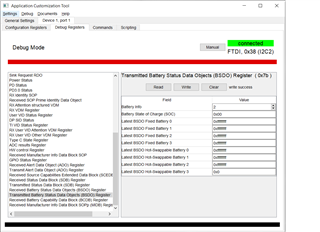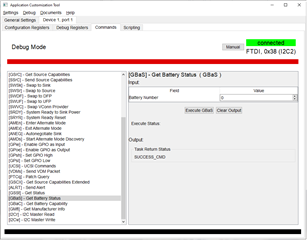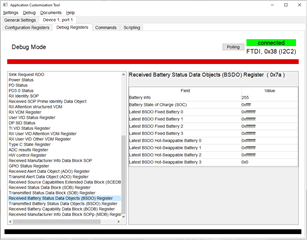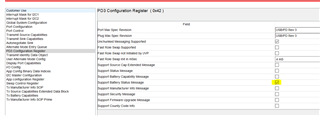Part Number: TPS65987EVM
When running the TPS6598x Application Customization Tool (version 6.1.1 or version 6.1.3), in debug mode and under the Debug Register tab, there are two registers called; Received Battery Status Data Objects (BSDO) Register (0x7a) and Transmitted Battery Status Data Objects (BSDO) Register (0x7b). Does anyone have any more understanding regarding these registers? There is a field in these registers named Battery State of Charge (SOC), and I am wondering how that works.
Questions:
1. What is sensing the State of Charge and then filling in the SOC field? Is it an external uProc connected to the i2c bus that writes the information directly into the TPS65987DDH using a 4CC command?
2. I have two TPS65987EVM boards connected together (over the USB cable connectors) and the two boards are able to negotiate a PD contract between themselves, but I am not able to "pass across" the SOC field between these two ICs. Has anyone out there tried to do the same experiment? It seems like it should be an easy task, but I've tried a bunch of sequences and nothing is working for me.






